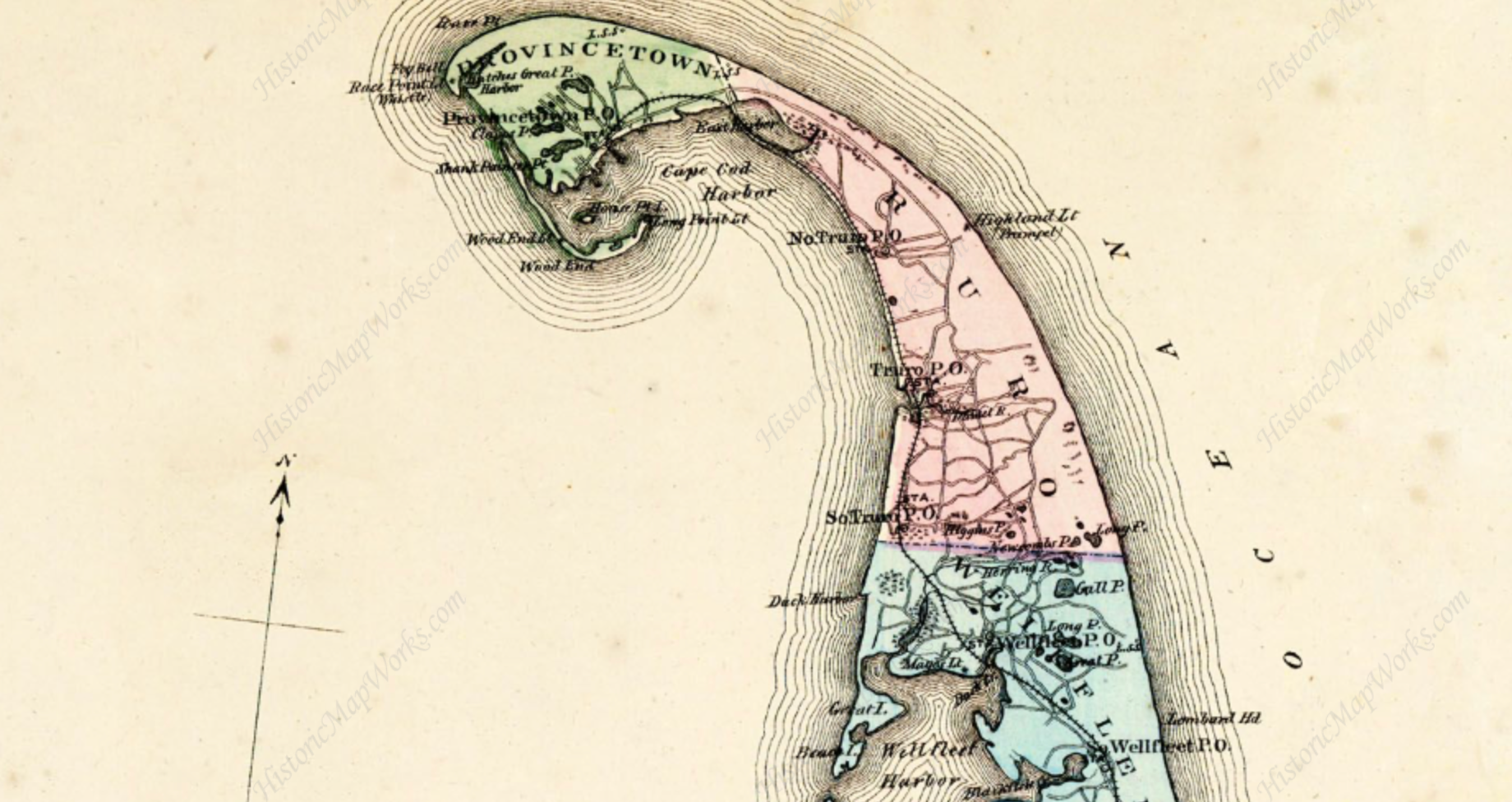Seafaring Simeon, another Revolutionary War patriot, lived on what is now known as Cape Cod. His story comes in part from Gibson’s H.M.S. Somerset.

Resident of Truro
Simeon Spencer resided in Truro in 1771, where he was taxed for two polls, and where his daughter, Martha, was born 4 August 1771. On 12 January 1773, the birth of Simeon’s son, John, was also recorded in the town records. Truro was a pioneer whaling town and produced three famous captains. Truro boys and men whaled on Cape Cod, and also signed on to dangerous, long-term voyages in search of whales that would yield valuable oils. Seafaring was a way of life for those living on Cape Cod. The revolutionary war came to Truro in 1775 “when a British ship lobbed cannonballs into the town and British marauders came ashore.”
Families began to empty their homes to prevent the British from taking their valuable goods. Not only were families worried about the British taking their food and other scare resources, they were also greatly affected by the activity at sea.
Whaling came to a near stop during the war, as ships were often captured by the British. Without whaling, the people of Truro had no income and no means of support. Loyalist sentiments decreased among the population.
Resident of Provincetown
The famous British Man of War ship, H.M.S. Somerset, wrecked on the shores of Cape Cod on 2 November 1778. Simeon Spencer of Provincetown sailed to the wreckage, climbed on board and spent the night on the ship. As was customary for the time, Simeon claimed salvage. It seems likely that Simeon was a whaler, as Francis Culmore, a crew member, deposed that “he saw Simeon Spencer come down with a whale boat and came on bord…” David Lile, another crew member, stated Simeon was on board the ship 24 hours before any other American, and James Payn mentioned that Simeon received 42 shirts from the ship.
Simeon attempted to prevent looting of the H.M.S. Somerset, undoubtedly to preserve the contents for his own benefit in accordance with local custom. However, the Board of War, created by the General Assembly of Massachusetts, had other ideas; the guns, supplies and other assets aboard the ship were desperately needed to fight the war against the British. A Maritime Court was held on 30 March 1779; it was decided two-thirds of the proceeds were to be given to the State, 1/6th to Simeon Spencer et al., and 1/6th to Seth Nickerson, et al. Simeon and others from Cape Cod disagreed with the decision, and a second Maritime Court session was held, this time in Ipswich. The State’s portion was reduced to ½, but Simeon’s portion remained at 1/6th, or £5,335. These proceeds were to be split with three other people. While considerably less than what he felt he was entitled to, his own portion of the auction, approximately £1333, was nothing to balk at.
Sailor in the Revolutionary War
Simeon Spencer served in the Revolutionary War aboard the Lion, commanded by Captain Wingate Newman. He was sworn to service at Boston on 12 July 1781, aged 33 years, 6’ 2” in height, with a dark complexion. The Lion was a 250-ton burthen privateer that was commissioned 14 July 1781. It was likely the same ship that was captured by the British at Newfoundland 14 August 1781. There was only one Simeon Spencer in Massachusetts who was taxed in 1771. The name does not appear in the 1790 U.S. Census. In fact, only nine Massachusetts households were headed by men with the Spencer surname in 1771. By 1790, there were a total of 19 Spencer households in the state, enumerated as follows:
| County Name | No. Households |
| Berkshire | 11 |
| Hampshire | 1 |
| Worcester | 1 |
| Dukes | 1 |
| Essex | 1 |
| Suffolk | 1 |
| Nantucket | 1 |
| Barnstable | 2 |
The two Barnstable County enumerations included Simeon’s widow, Abigail. Therefore, it is highly unlikely that there were two men named Simeon in Massachusetts in 1781 that were old enough to serve in the Revolutionary War, and it must certainly be Simeon, our subject, with the service aboard the Lion. Nevertheless, further research will be undertaken in Barnstable County colonial records as available.
Early Death
Simeone likely died sometime after he served in the Revolutionary War and the enumeration of the 1790 Federal Census. Simeon’s widow was listed as head of household in Provincetown on the 1790 U.S. Census, and additional attestations state that Abigail was a widow when her daughter, Martha, married at the family residence on 8 January 1791.

